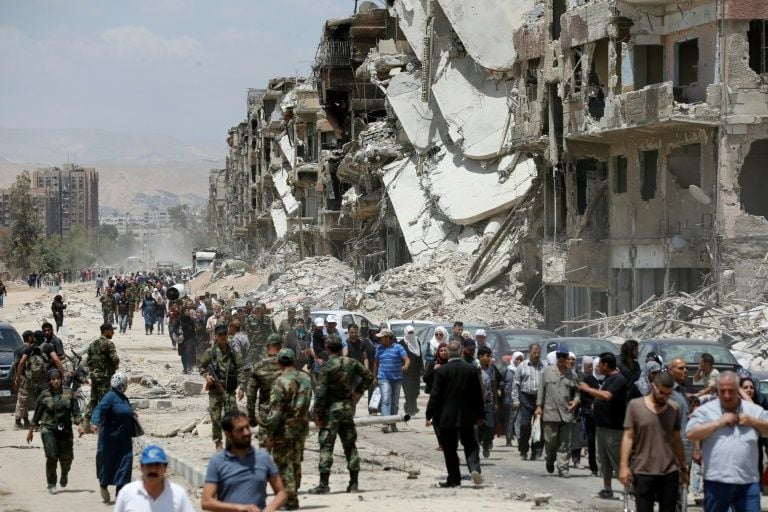Number of civil conflicts doubles since 2001: ICRC

Agency
June 19, 2018

GENEVA – The number of civil conflicts worldwide has more than doubled since the start of the century, posing new challenges for curbing atrocities, the International Committee of the Red Cross said Monday.
In a new report, the ICRC also noted "more armed groups have emerged in the last six years than in the previous 60," meaning that persuading fighters to adhere to basic humanitarian principles has become increasingly complex.
The ICRC is the primary organisation responsible for protecting the Geneva Conventions -- essentially the laws of war.
Its report, entitled the Roots of Restraint in War, noted that historically the ICRC was largely focused on working with national militaries and well-structured rebel groups to enshrine international humanitarian law in their codes of conduct.
But the report said that approach needs to be updated to respond to the changing nature of those now fighting.
Between 2001 to 2016, the number of "non-international armed conflicts" jumped from 30 to more than 70, the ICRC said.
The number of groups fighting in any given conflict has also changed substantially.
"Only one-third of conflicts are between two parties today," while 44 percent "have between three and nine opposing forces," the ICRC said.
It highlighted the extreme examples of the Libyan city of Misrata, where 236 armed groups were recorded in 2011, and data from the Carter Center saying that in 2014 the Syrian conflict was being fought by 1,000 separate groups.
- New battlefield dynamics -
Report co-author Brian McQuinn told AFP armed groups now are also increasingly "organised in fundamentally different ways."
In the past, a rebel force like for example a Maoist group fighting in Asia would likely have had a structure that tightly mirrored the state military it was opposing.
But with those fighting more often reporting through a looser command structure, the ICRC report explores new strategies to infuse a culture of restraint -- notably a respect for civilians -- into the modern battlefield.
"The increasing number of decentralised groups on the battlefield -- often connected through shifting alliances -- makes talking to and influencing all sides more difficult, but not impossible," it added.
The reports calls for renewed efforts to understand the structure of each armed group before attempting education on humanitarian norms.
Also, rather than exclusively focusing on the laws of war, humanitarian agencies need to understand how social and behavioural norms are adopted in different armed groups before trying to sensitise fighters about demonstrating restraint in combat.
---


Leave Comment